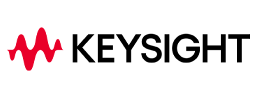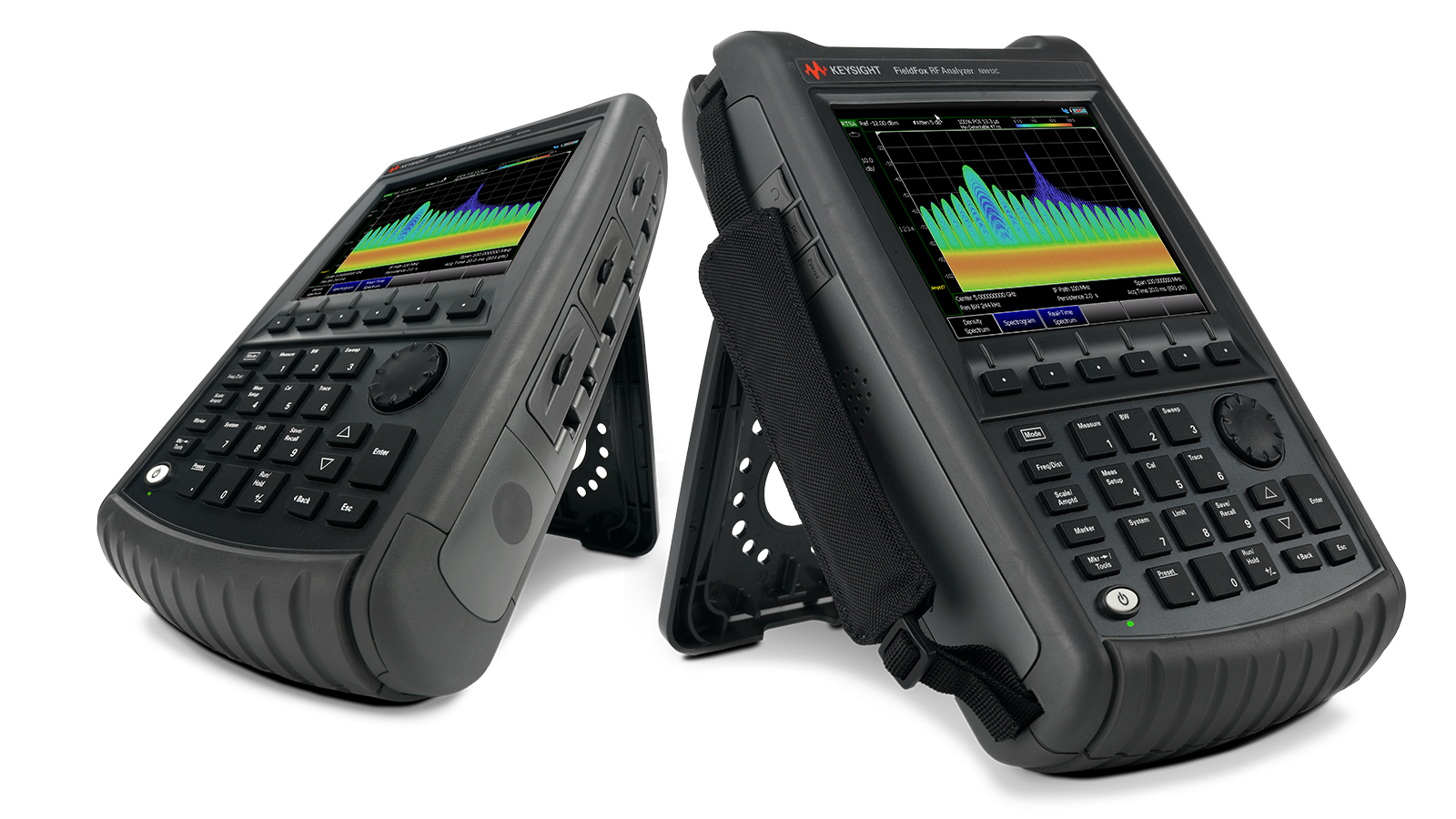Interference Hunting with the
Keysight FieldFox
Identify and locate the source of unwanted signals with real-time spectrum analysis.
Interference hunting involves identifying and locating the source of unwanted radio signals or interference in a communication system. These disruptions can stem from co-channel, adjacent channel, or broadband interference. Direction finding (DF) techniques enable operators to pinpoint the exact location of the interfering source.
Tracking down these signals requires frequency visualization, measuring and logging field and signal strength. Spectrum analyzers visualize the frequency spectrum, identify unusual patterns, and use mapping capabilities to locate sources of interference, with real-time spectrum analysis (RTSA) for dynamic interference tracking.
Interference Hunting Solutions
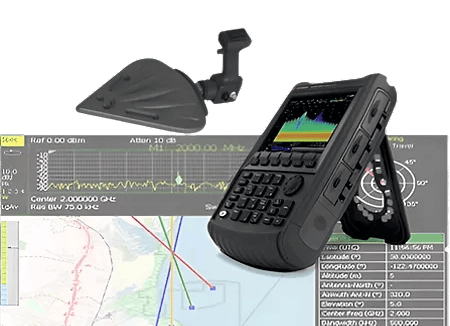
Interference Finder with DF Antenna
Perform last mile detection of an unknown signal source using manual signal triangulation.
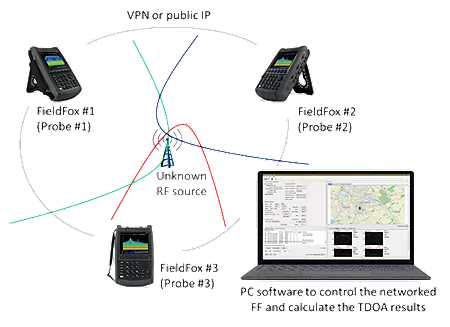
Time Difference of Arrival (TDoA)
Determine the location of an unknown signal source using several FieldFox analyzers in separate geographical locations with synchronized GPS signals.
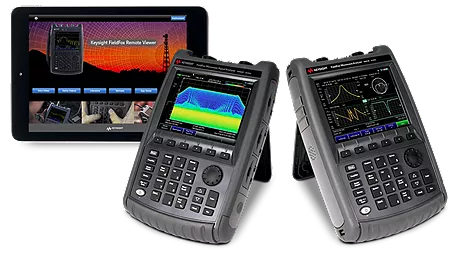
Monitor 5G Field Interference
Identify in-band and out-of-band interference with real-time spectrum analysis and signal capture capabilities.
Interference Hunting Resources
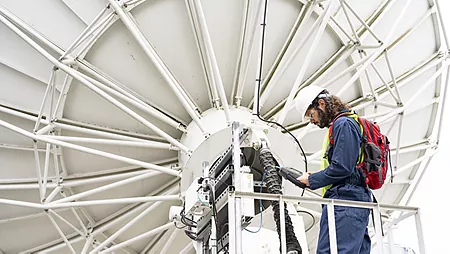
Overcome RF and Microwave Interference Challenges
This application note discusses practical strategies to overcome RF and microwave interference challenges in the field using real-time spectrum analysis (RTSA). Learn about the different types of interference encountered in commercial and aerospace and defense (A/D) wireless communication networks. Uncover the drawbacks associated with traditional interference analysis and get an in-depth introduction to RTSA. Understand why RTSA is valuable for troubleshooting interference in today’s networks with bursty and elusive signals.
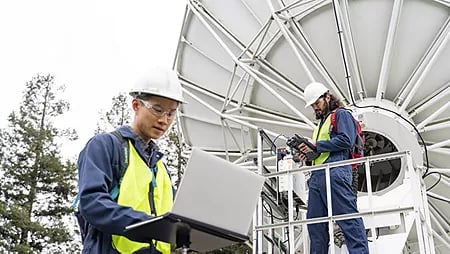
A Practical Guide to Locate and Mitigate Interference
A seemingly limitless variety of wireless systems operate in the world today, with new ones continuously emerging. Governments around the world do their best to regulate the electromagnetic (EM) spectrum, assigning specific frequency bands to certain communications applications. As these frequency bands become more crowded, networks are more likely to experience interference or even communications failure. These challenges arise from any radio-frequency (RF) system, including cellular phones and drones.
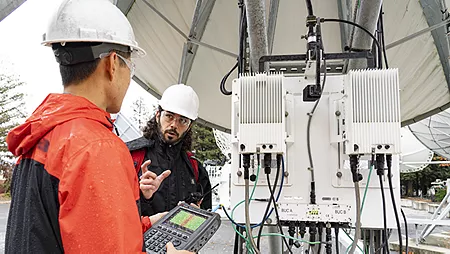
Investigate Interference Issues in the Field with RTSA
Interference is everywhere, regardless of the network you operate on — and traditional interference analysis is not always the most reliable. Avoiding complications and detecting elusive interference signals in the field requires real-time spectrum analysis (RTSA). This whitepaper will discuss sources of radio frequency (RF) and microwave (MW) interference, traditional interference analysis pitfalls, and how RTSA helps address interference issues before they become a problem.
Interference Hunting FAQ
What is interference hunting?
Interference hunting is the process of detecting, locating, and mitigating interference issues impacting the performance of a wireless communication system. This involves monitoring the spectrum for signals impacting the performance and reliability of the communication system. Once the interfering signal is identified and characterized, use techniques such as direction finding to locate the source of the disruptive transmitter and mitigate the interference.
What equipment is used for interference hunting?
Depending on the method, interference hunting uses a variety of equipment to detect, locate, and mitigate interference issues. Remote monitoring software detects signals impacting the performance and reliability of the communication system. Tracking down these signals requires frequency visualization, measuring and logging field and signal strength.
Spectrum analyzers visualize the frequency spectrum, identify unusual patterns, and use mapping capabilities to locate sources of interference, with real-time spectrum analysis (RTSA) for dynamic interference tracking. Often paired with a spectrum analyzer, direction finding (DF) antennas indicate the general direction of the interfering source. Additionally, GPS receivers provide precise location and mapping data.
Why is interference hunting important?
Signal hunting grows increasingly complex in today’s crowded RF spectrum environment. Interference can cause problems such as data loss, signal degradation, and unstable network performance. This lowers the user experience with poor audio quality, dropped calls, and disrupted video streams. In a world where seamless communication is the expectation, interference hunting is crucial for preventing communication disruptions.

